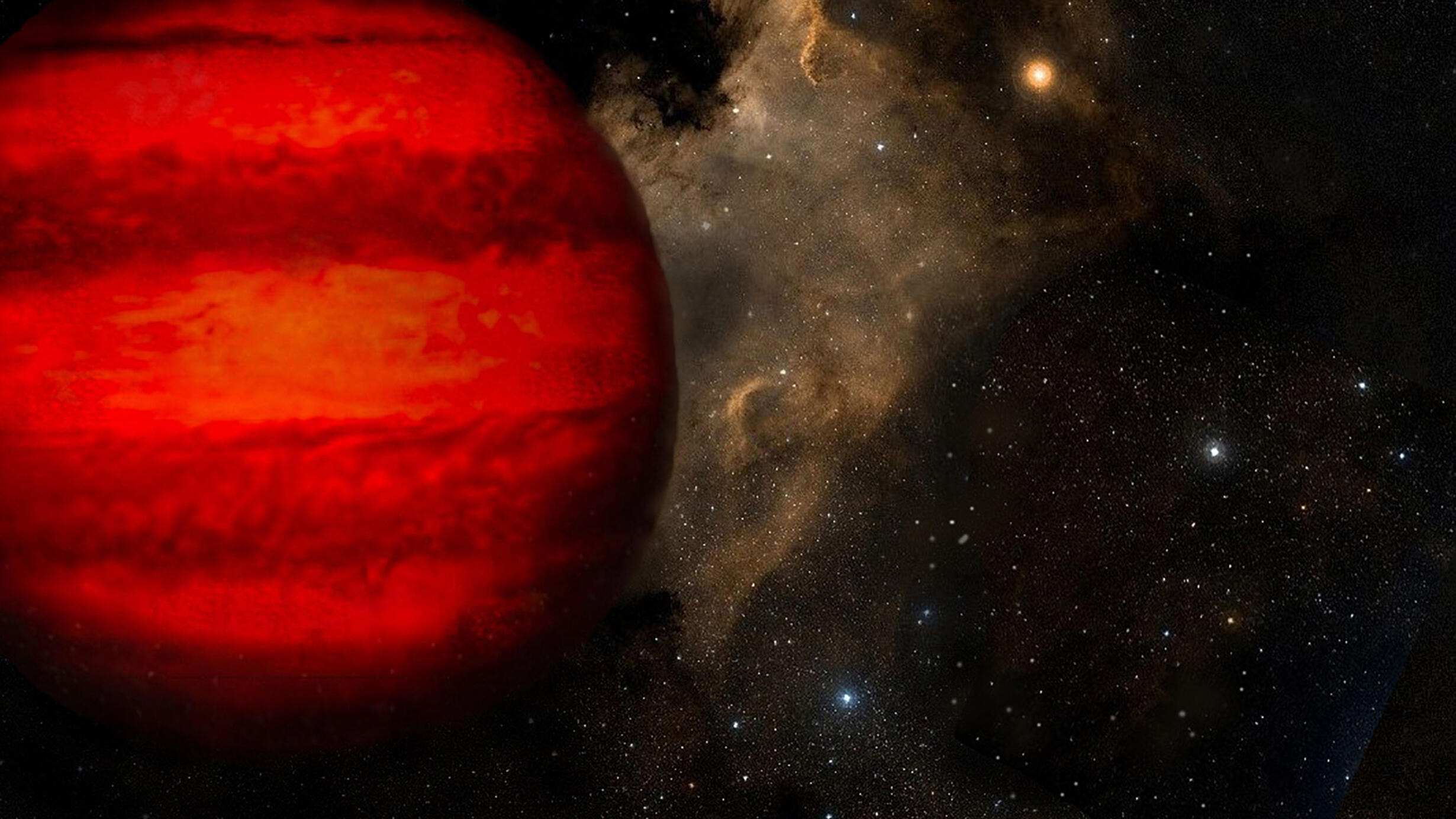 Artist’s concept of a brown dwarf. Despite their name, brown dwarfs can be many different colors and often appear magenta or orange-red to the human eye.
Artist’s concept of a brown dwarf. Despite their name, brown dwarfs can be many different colors and often appear magenta or orange-red to the human eye.Courtesy of citizen scientist William Pendrill
With the help of citizen scientists, astronomers have discovered three unusual brown dwarfs—balls of gas that are sometimes called “failed stars.” The brown dwarfs, described in two recently published scientific papers, were spotted by participants in the NASA-funded Backyard Worlds: Planet 9 project, which the Museum co-founded.
The first discovery, detailed in The Astrophysical Journal, is of an extremely rare brown dwarf called W0830 for short. W0830 is a contender for one of the coldest star-like objects ever found.
“At first we didn’t believe it was real. The object wasn’t convincing at all with the data we had,” said Dan Caselden, one of the participants who discovered this cold object while combing through hundreds of images from NASA’s Wide-Field Infrared Survey Explorer (WISE) satellite and its current mission, called NEOWISE, as a Backyard Worlds volunteer.
If an object is close enough to Earth, it will appear to “jump” when multiple images taken of the same spot in the sky a few years apart are compared. So far, many of the objects found by Backyard Worlds volunteers have been brown dwarfs, which don’t burn hydrogen the way stars do, and bear much more resemblance to giant planets like Jupiter.
In addition to Caselden, six other Backyard Worlds participants—Guillaume Colin, Sam Goodman, Austin Rothermich, Nikolaj Stevnbak, Melina Thevenot, and Jim Walla— contributed to this work, discovering four additional, slightly warmer brown dwarfs that are included in the study.
Astronomers confirmed the volunteers’ discoveries with observations from NASA’s Spitzer Space Telescope and the Hubble Space Telescope, finding that W0830 has a temperature not much warmer than a summer's day: somewhere between 80 and 170 degrees Fahrenheit.
“That makes it one of the coolest brown dwarfs ever found,” said Daniella Bardalez Gagliuffi, lead author of the study and a postdoctoral fellow in the Museum’s Department of Astrophysics. “But there's more to it than that. Until recently, the coldest-ever brown dwarf has been in a class all by itself—much, much redder in color than all the other known brown dwarfs—and nobody has understood why. This new ‘missing link’ brown dwarf helps to fill in this gap, providing a path for future observations to help us connect the dots and understand how these faint, rare objects are related.”
The second set of discoveries, also to be published in The Astrophysical Journal, are the most planet-like brown dwarfs yet seen among the Milky Way’s oldest population of stars. Weighing about 75 times the mass of Jupiter and clocking in at about 10 billion years old, these two brown dwarfs have highly unusual compositions: they have very little iron, meaning that like ancient stars, they have not incorporated iron from star births and deaths in their environments. One of these brown dwarfs seems to have only about 3 percent as much iron as our Sun.
Courtesy of citizen scientist William Pendrill
Astronomers hope to use these brown dwarfs to learn more about exoplanets, which are planets outside of our solar system. The same physical processes may form both planets and brown dwarfs.
“A central question in the study of brown dwarfs and exoplanets is, how much does planet formation depend on the presence of metals like iron and other elements formed by multiple earlier generations of stars?” said astrophysicist Marc Kuchner, the principal investigator of Backyard Worlds: Planet 9 and the citizen science officer for NASA's Science Mission Directorate. “The fact that these brown dwarfs seem to have formed with such low metal abundances suggests that maybe we should be searching harder for ancient, metal-poor exoplanets, or for exoplanets orbiting ancient metal-poor stars.”
The study’s lead author, Adam Schneider of Arizona State University’s School of Earth and Space Exploration in Tempe, first noticed one of the unusual brown dwarfs, called WISE 1810, in 2016, but it was in a crowded area of the sky and was difficult to confirm.
With the help of a tool called WiseView, created by Caselden, Schneider confirmed that the object he had seen years earlier was moving quickly, which is a good indication that an object is a nearby celestial body, like a planet or brown dwarf.
The second unusual brown dwarf, WISE 0414, was discovered by a group of citizen scientists including Backyard Worlds volunteers Paul Beaulieu, Sam Goodman, William Pendrill, Austin Rothermich, and Arttu Sainio.
“Few people realize how much there is to discover about the universe by simply looking through images,” said Jackie Faherty, a senior scientist in the Museum’s Department of Astrophysics, a co-founder of the Backyard Worlds project and an author on both studies. “I am astounded on a regular basis by an object that a citizen discovered yet scientists overlooked. These discoveries are a testament to the ability of anyone on the planet to participate in a science project.”